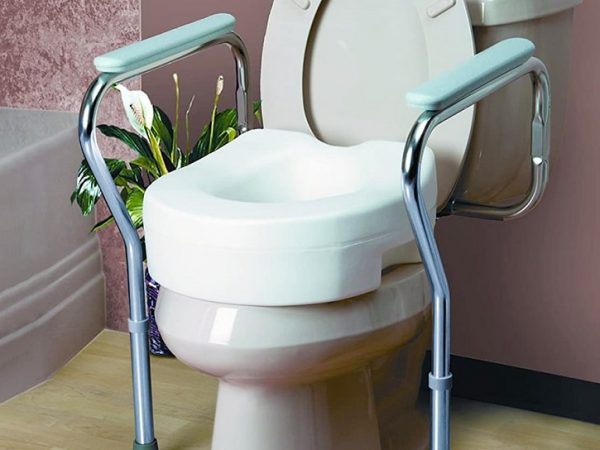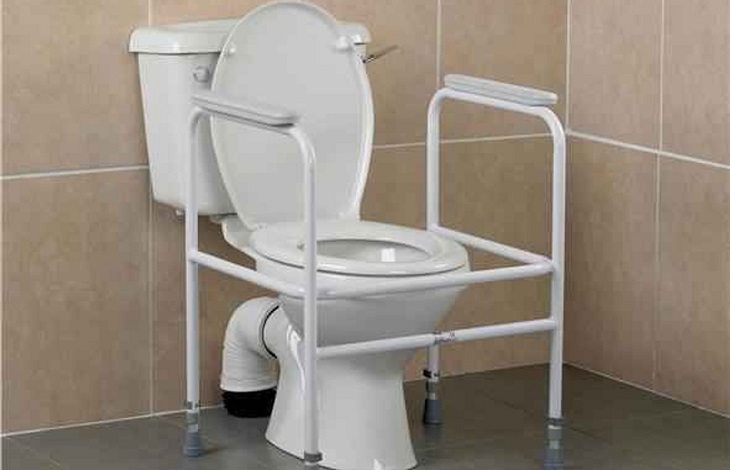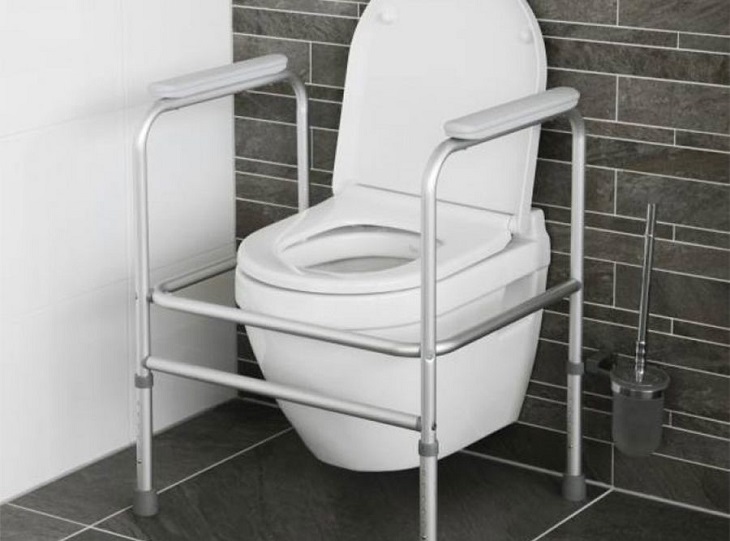05
Sep

Navigating everyday tasks can be challenging for some people, especially those with limited mobility, seniors, or individuals recovering from surgeries or injuries. Using the toilet can be especially difficult for them due to challenges in balance, strength, and ease of movement.
Fortunately, there’s a solution in the form of a toilet surround also known as a toilet safety frame or bathroom safety rail. This crucial tool provides essential assistance, making it safer and easier for these individuals to maintain their independence during this daily ritual.
Whether you’re a caregiver or someone looking for more independence, this guide will help you find the best safety frame on the market. Keep reading to find out which factors you need to consider before choosing the ideal option for your needs.

Considering the type of frame is crucial because it directly impacts the frame’s functionality, ease of installation, and suitability for the user’s needs. It’s essential to select a secure toilet surround frame that aligns with the user’s specific requirements and the bathroom’s constraints. Therefore, understanding the various frame types and their characteristics is necessary for ensuring safety and convenience during toilet use.
The freestanding toilet surround frame type is the one that stands independently on the floor, and as such is a practical choice when space allows. It offers robust stability and can accommodate various users. However, wall-mounted frames, which are affixed to the bathroom wall, provide excellent stability without using up floor space. Yet, they require drilling into the wall, making installation more complex.
Toilet-attached frames, attaching directly to the toilet itself, are space-efficient but may have limitations in terms of stability and adjustability. Adjustable frames, regardless of type, provide versatility as they can be customised to fit different toilet sizes and user needs. In contrast, fixed frames have predefined dimensions and configurations, limiting adaptability.
Stability and weight capacity are two fundamental factors to consider when purchasing a toilet frame. The frame’s stability directly influences the user’s safety and confidence while using it. A stable frame ensures that it remains firmly in place, preventing any wobbling or tipping that could lead to accidents, especially for individuals with balance or mobility issues.
Weight capacity is equally important, as it determines the maximum load the frame can support. It’s vital to choose a frame with a weight capacity that exceeds the user’s weight to ensure both safety and durability.
These are three crucial elements to weigh in when selecting a safety frame. First, consider adjustability. An adjustable frame allows for customisation, ensuring it fits both the toilet’s size and the user’s preferences. This adaptability is especially important if you have different users or if the toilet dimensions vary.
Next, look at grip. Secure grip handles are vital for user confidence and safety. Opt for frames with textured, non-slip handles that are comfortable to hold even if hands are wet.
Lastly, consider padding. Padded armrests provide added comfort during use. Choosing a frame with sufficient padding can significantly enhance the overall toilet experience, especially for those with sensitive skin or long-term usage needs.
Before purchasing a toilet frame, you should also consider the available space and the design of the bathroom. Make sure that the frame you choose fits comfortably within the layout without causing obstructions or hindering accessibility. Some bathrooms may have limited space, in which case selecting a compact, space-efficient frame is essential.
Additionally, the design of the frame should complement the bathroom décor and not disrupt its aesthetic appeal. By taking space and design into account, you can strike a balance between functionality and aesthetics.

Toilet frames come in various materials, including stainless steel, aluminium, and plastic. It’s crucial to choose a frame constructed from durable, moisture-resistant materials that can withstand the bathroom environment’s rigours.
For instance, stainless steel and aluminium frames are known for their longevity and rust resistance, making them popular choices. The material should also be easy to maintain. A durable frame ensures that it will provide reliable support over time, making it a worthwhile investment.
The bathroom is an environment prone to moisture and bacteria, making regular cleaning an important chore. As such, the ease of cleaning is an additional consideration when choosing a safety frame for the toilet. Prioritising ease of cleaning ensures that maintaining hygiene in the bathroom is hassle-free, contributing to a healthier and more comfortable environment for users.
That being said, look for a frame with smooth, non-porous surfaces that are easy to wipe down and disinfect. Frames with minimal crevices or joints are preferable, as they are less likely to accumulate dirt or germs. Stainless steel and plastic frames are often more straightforward to clean than wooden ones. Moreover, consider frames with detachable components or tool-free disassembly for convenient cleaning access.
These frames come at different prices, so it’s a good idea to decide how much you’re comfortable spending. Having a budget in mind helps you focus on options that fit your finances. While fancy models may be tempting, there are often more affordable ones that still do the job well. So, make sure to consider your budget and balance your needs with what you can afford when picking a toilet frame that provides the right support and fits your wallet.
A toilet frame is typically installed on both sides of the toilet bowl for crucial support and stability during toilet use. It should be positioned to straddle the toilet, with one side resting on the left and the other on the right of the bowl. The arms of the frame extend both in front and behind the toilet. Depending on the specific design, the frame may either rest on the floor, attach to the toilet bowl, or secure to the wall to enhance stability.
It’s important to always adhere to the manufacturer’s installation instructions, as installation methods can vary between different models. Some frames are adjustable, allowing for customisation to fit various toilet sizes and user preferences. Correct installation and adjustment are vital to ensure the frame delivers secure support for individuals with mobility limitations or those needing assistance during toilet use.
Finding the ideal toilet seat surround involves a thorough evaluation of various factors such as the user’s specific requirements, bathroom layout, material, ease of cleaning, and budget constraints. It’s also essential to prioritise safety, comfort, and practicality when making your selection.
By carefully considering these factors, you can confidently choose a toilet frame that not only provides support but also seamlessly integrates into your bathroom environment. Remember, the right safety frame enhances independence, ensures safety, and contributes to a more comfortable experience, ultimately improving the overall quality of life for those who depend on it.